Did serial killer Ivan Milat brutally murder these other victims?
SERIAL killer Ivan Milat was in the area when several other young people vanished and were brutally murdered. Police believe he may be involved in their deaths.
SERIAL killer Ivan Milat’s reign of terror lasted four years — between 1989 and 1993 — when seven young people vanished and their bodies, shot or strangled, were found in the Belanglo Forest.
But in 1993, three years before Milat would be sentenced to life for the backpacker murders, NSW homicide detectives launched a nationwide probe.
It was into the murdered or the missing young people who had disappeared from every state and territory of Australia.
The list ran to 58 people, and included backpackers and travellers from the US, Britain, Germany, Italy and New Zealand.
But most of them were Australians aged between their late teens and late twenties.
Seventeen of them had been murdered, their bodies found strangled, stabbed, shot or beaten to death.
Fifteen of those had disappeared while hitchhiking.
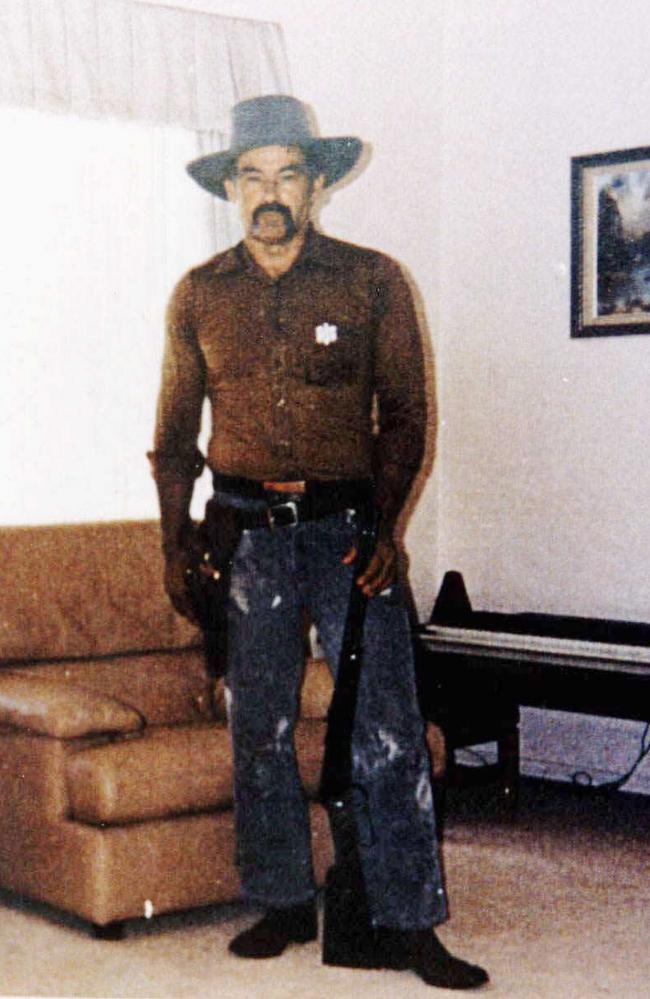
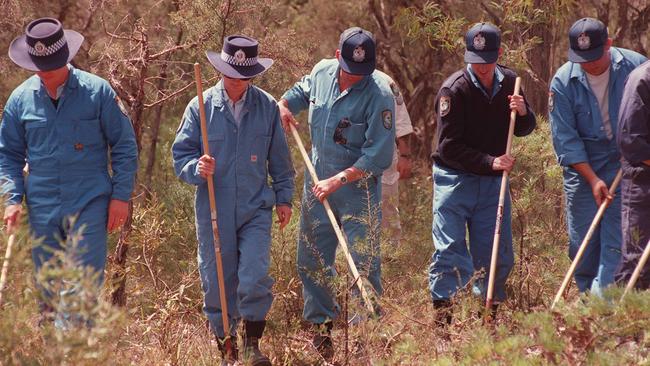
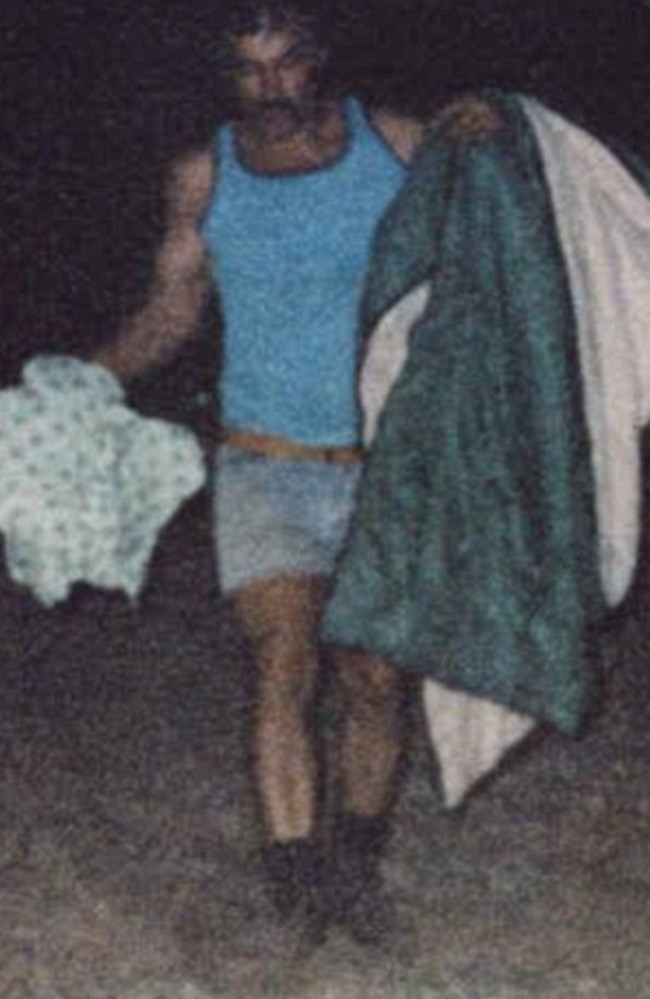
Task Force Air, led by Assistant Commissioner Clive Small, began examining the unsolved cases.
Detectives looked into the files of five women who disappeared from locations near where Milat had been working.
The murders went back to 1971, when Ivan Milat had been released from prison after doing two stretches for theft.
The 26-year-old was back living at his parents’ home in Campbell Hill Road, Guildford, in western Sydney.
Working for the state Metropolitan Water and Sewerage Board, he cruised the roads between Liverpool and Canberra in his gold XY Ford Fairmont.
Apart from cars, Ivan liked guns and posed for photographs with his weapons dressed in a cowboy hat.
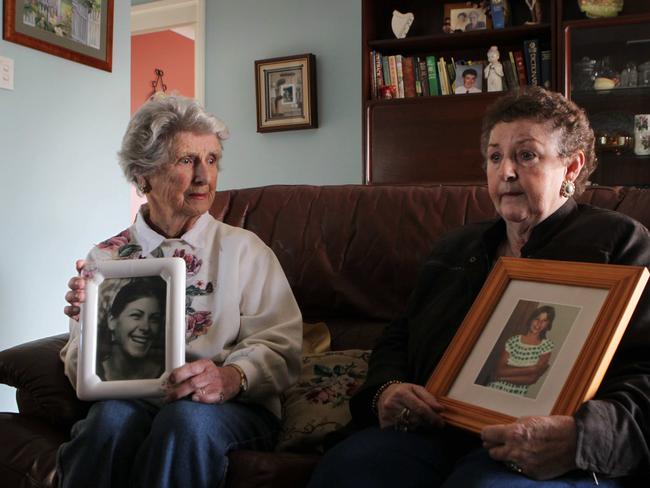
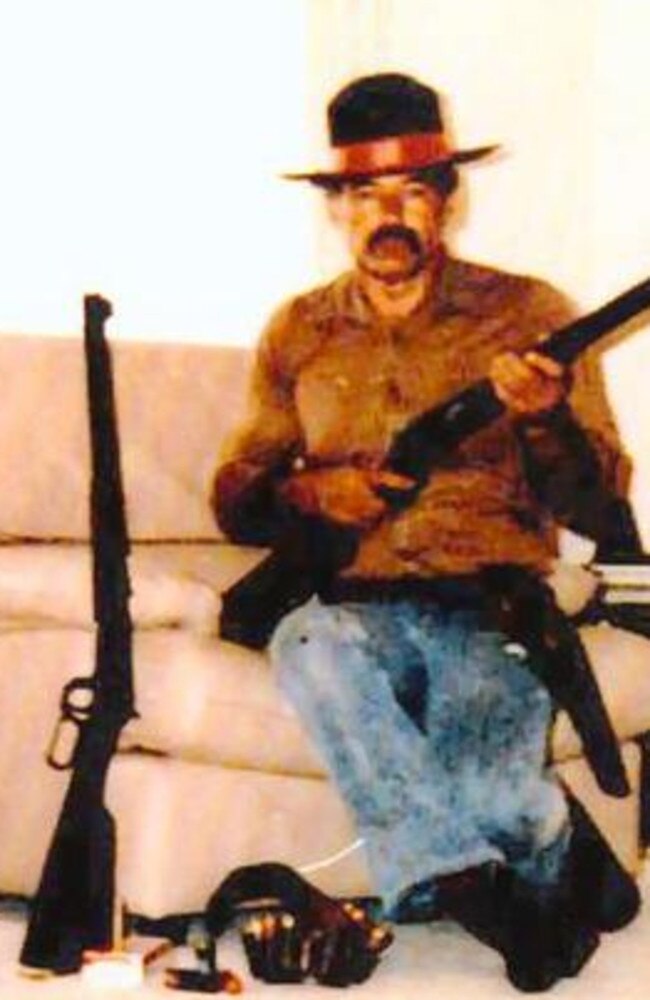
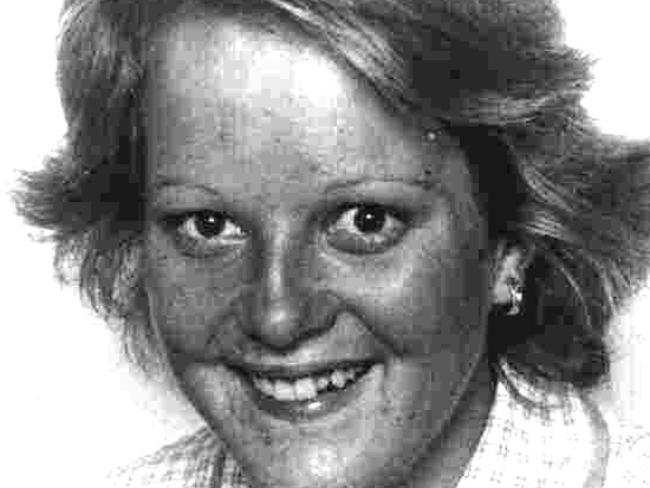
He was a “shooting nut” who also loved knives.
At the kill site of the seven young people he murdered in Belanglo, Milat left the bodies covered in leaves and branches.
Beer bottles and cigarettes were found near some of the bodies.
The task force led by Assistant Commissioner Clive Small would lead Milat to trial on the backpacker murders, without any murder charges added to the original seven.
But Milat was in the frame for several of these missing or murder cases, and he would be asked and deny his involvement.
At one point, Ivan’s younger brother Richard Milat would speculate there would be “heaps more bodies” out there to be found.
Another of Milat’s brothers later said, “Ivan is ... easily upset. Ivan’s been doing something bad, years ago.”
Some time before the mid-1970s, Ivan Milat began a job driving trucks carting tyres to Goulburn, Yass, Canberra, Perth via Adelaide, Melbourne, Yass and Brisbane.
DOUBLE RAPE
On Good Friday in April 1971, Ivan Milat picks up two young female hitchhikers near Liverpool train station.
He has a knife. He binds the girls and tells them, “I am going to kill you. You won’t scream, when I cut your throats will you?”
He rapes one of the girls who manages to convince him they stop for cans of drink.
With the help of men from inside a petrol station cafe, the girls manage to escape and Milat takes off.
He is arrested. Facing both rape charges and two counts of armed robbery, he fakes his own death.
Milat leaves his shoes at the Gap, a renowned Sydney suicide spot.
Later that year, the police discover that Ivan has fled to New Zealand, where he somehow made a living.
Officially, Milat is rearrested in late 1974 when he returns after his mother is taken to hospital suffering from a heart attack.
Milat manages to escape conviction of both the rape charges and also the armed robbery counts.
Some believe he returned surreptitiously, on a fake passport, and may have lived interstate before his 1984 arrest.
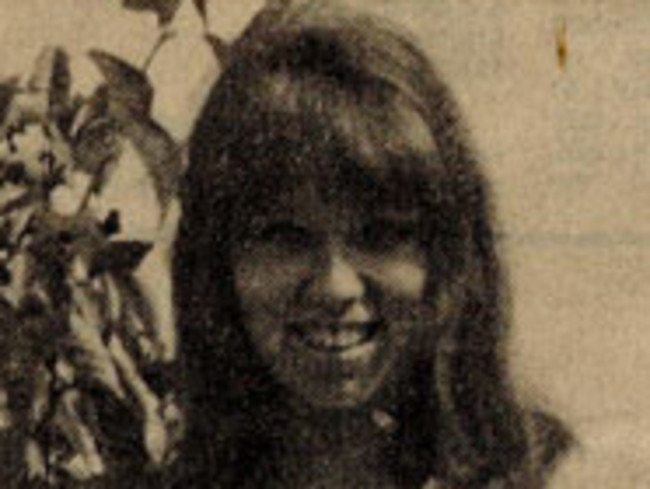
THE QUEENSLAND CASES
Keren Rowland
February 26, 1971
An attractive 20-year-old, Keren and her sister were in separate cars en route to a hotel in Canberra.
Along Parkes Way, a road which passes by Lake Burley Griffin, Keren’s white Mini Morris 850 sedan dropped from sight in the rear vision mirror of her sister’s vehicle.
Keren fails to arrive at the gathering and her sister thinks she must have decided to go home.
That night, Keren’s car is located on Parkes Way, in rugged country in the then undeveloped outskirts of the nation’s capital, with no petrol in the tank.
The next day, Ivan reports for work at Liverpool and his workmates later recall him boasting that he has killed a man and buried the body in the bush.
On May 13, Keren’s father Geoffrey gets the phone call he has been dreading.
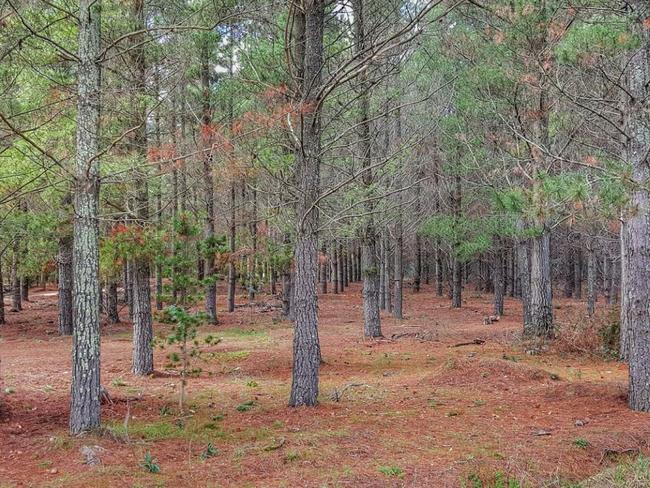
His daughter’s remains have been found 15 metres off a track in the Fairburn Pine Plantation near the National Air Disaster Memorial.
The spot is 10km from where Ms Rowland appeared to have run out of petrol.
A trail of clothing led from the track to the site to Ms Rowland’s body.
She is lying on her back with her legs straight out and her arms encircling her head.
Her clothing has been pulled down, indicating sexual assault. A beer bottle is nearby on the ground.
More than 20 years later, some similarities would be noted with the death scenes of the backpackers found in the Belanglo Forest.
Another murder investigated by the task force, of hitchhiker Peter Letcher, would also have beer bottles at the scene.
Keren’s cause of death was not established.
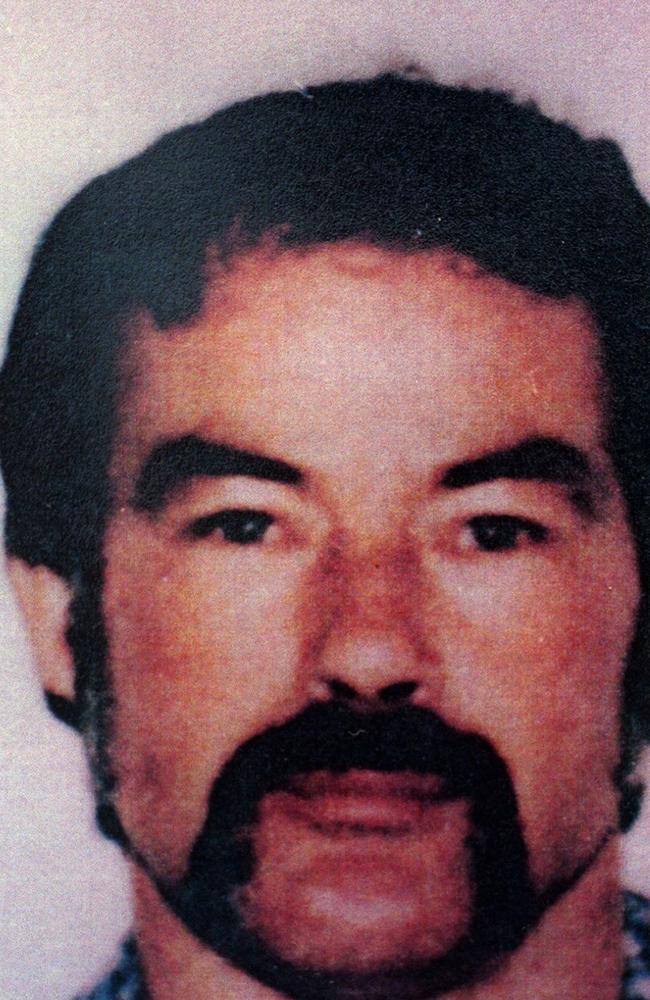
Robyn Hoinville-Bartram and Anita Cunningham
July 1, 1972
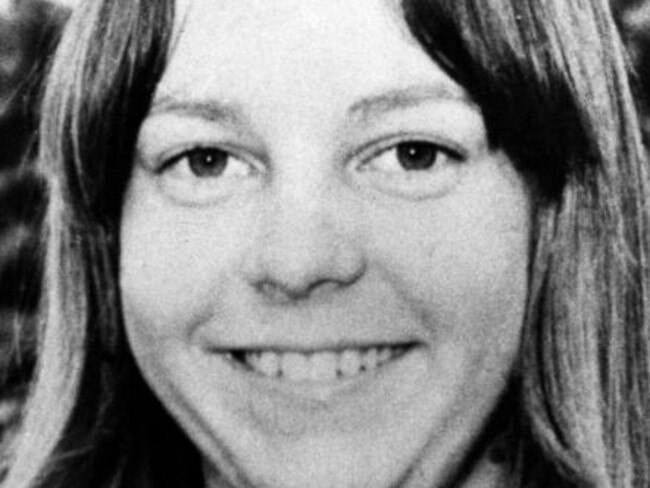
The girls were teenage student nurses and flatmates who set off from Melbourne in June 1972 with camping gear and a plan to hitchhike to northern Queensland.
They never arrived at their destination — Bowen — and on November 15 that year, Ms Hoinville’s body was found under a bridge at remote Sensible Creek, 80km west of Charters Towers.
The 19-year-old had been shot twice in the head with a .22 calibre rifle.
No trace was ever found of 18-year-old Anita Cunningham.
Retired detective Mick Gurn later investigated the case and uncovered a startling witness account of a meeting with the two girls at the Pentland Hotel, about 40km from Sensible Creek.
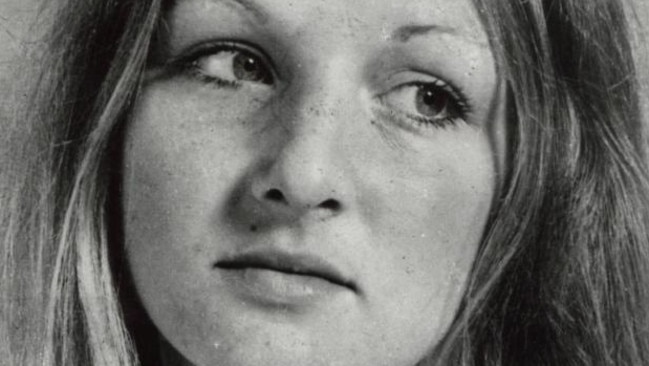
The witness, a woman, said she and her mother had chatted with the girls at the hotel bar in July.
The girls told her that they had travelled on a truck to Pentland with a man called “Cowboy”, also known as Richard.
“They wanted a lift to Charters Towers and one of the men who was in the bar there arranged a lift,” Mr Gurn told the Townsville Bulletin.
“It was to be given by a member of the band who was there that day so the girls and this Richard left with this man and at least one or two other men.
“Of course the girls were never seen alive again.”
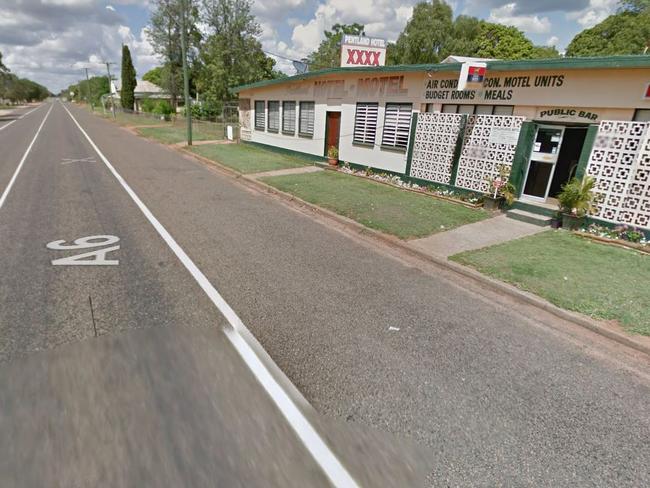
Gabrielle Jahnke and Michelle Riley
October 6, 1972
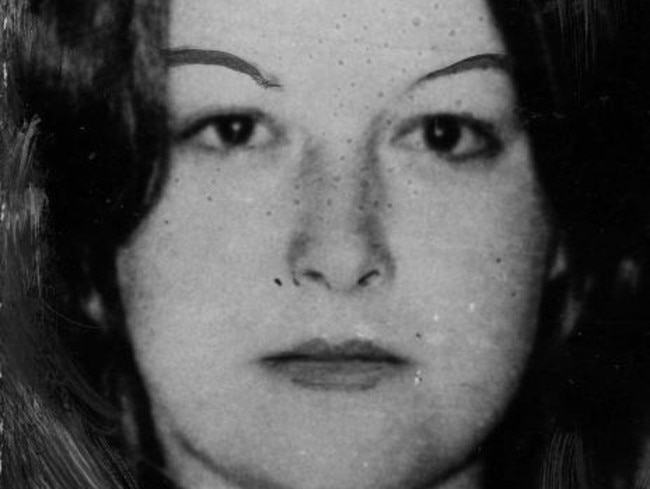
The girls were best friends who on Friday October 5, 1972 decided hitchhike from Brisbane to check out the party and pub scene on the Gold Coast.
They left Michelle’s home in the southern Brisbane suburb of Annerley around 5pm.
They were last seen alive alighting from a Black and White taxi near Petrie Bight on the Brisbane River, 6km from Annerley at 10am on the Saturday.
A week later, at 8am on October 13, Gabriele Jahnke’s body was found at the bottom of a steep embankment on the side of the Pacific Highway at Ormeau, half way between Brisbane and Surfers Paradise.

The location was 50km south of where the girls were last seen.
Ten days later, at 6pm on October 23, Michelle Ann Riley’s body was found, just 12m from the road in bushland off the Mt Tamborine Highway, 6km south of Logan Village.
The girls’ bodies were found about 24km apart, but they had both died of massive head injuries from a fractured skull.
Ms Jahnke’s body was not wearing underpants and her dress had been pulled up, suggesting sexual assault.
Michelle Riley’s clothes had also been pulled up. Branches had been arranged over her body.

THE HUNTER REGION CASES
In late 1978 and early 1979, road worker Ivan Milat stayed at several different hotels in the vicinity of the Pacific Highway in the Hunter Region south of Newcastle.
Two young women and a schoolgirl from Swansea would go missing from the area within four months of each other during that time.
Police would later search the sand mine near a hotel at Belmont where Milat had stayed.
He also was known to stay at the Star Hotel in Newcastle, which was popular with young people.
They found gun pellets and empty cartridge cases during a search for a grave thought to contain one of the three.

Leanne Goodall
December 30, 1978
Twenty-year-old Leanne Goodall was dropped off by her brother Warren at Muswellbrook train station at 1.52pm on December 30, 1978.
She has spent Christmas with relatives in Sydney, before heading to the Hunter Valley with Warren and his girlfriend for a few days’ break.
The vivacious young woman was due to start a course at Newcastle Technical College in the new year.
Warren thought Leanne was taking the train back to Sydney, but in fact she had decided to go to Swansea near Newcastle and see her parents first.
Then she planned to head back to Sydney for New Year’s Eve.
It is now known she got off the train in Broadmeadow in central Newcastle.
Someone spotted her at 3.30pm that afternoon heading for the Star Hotel in Newcastle.
She was never seen alive again, and her remains were never found.
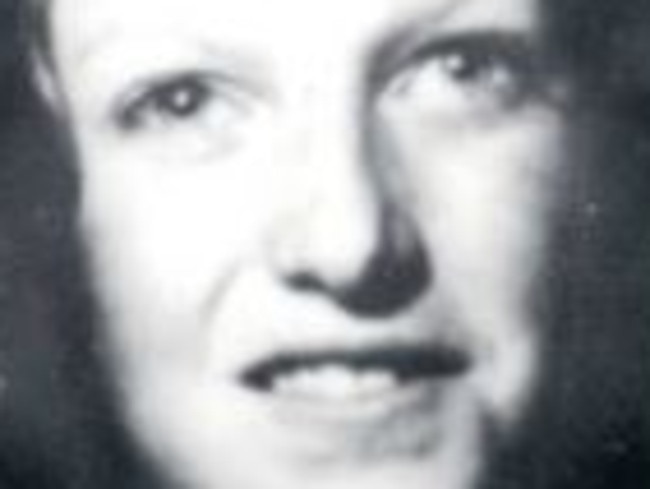
Robyn Hickie
April 7, 1979
Less than four months after Leanne Goodall’s disappearance, eighteen-year-old Robyn Hickie left her family home in Swansea to meet friends at the Belmont Hotel, south of Newcastle.
She had arranged to meet a netball teammate at the Belmont, and police later described her as “a known hitchhiker”.
After a few weeks of investigating police dropped the case, regarding her as a runaway.
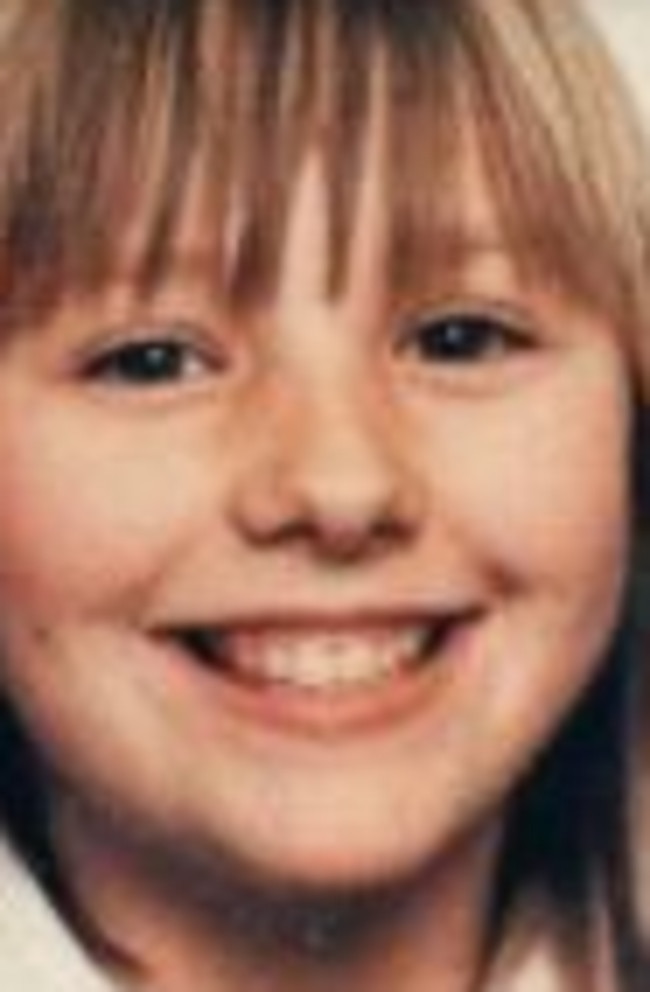
Amanda Robinson
April 20, 1979
Amanda Robinson, 14, vanished 13 days later after Robyn Hickie on her way home to Swansea on Lake Macquarie after a school dance.
She alighted from a bus and was never seen again.
Police launched an intensive search, but the teenager’s case was eventually filed as a missing person.
It was only in 2001, that an inquest named Ivan Milat as a persons of interest in the three girls’ disappearances.
State Coroner John Abernethy said Milat was of major interest to the investigation and had “definite links to the Hunter Region” in the late 1970s while employed as a road worker.
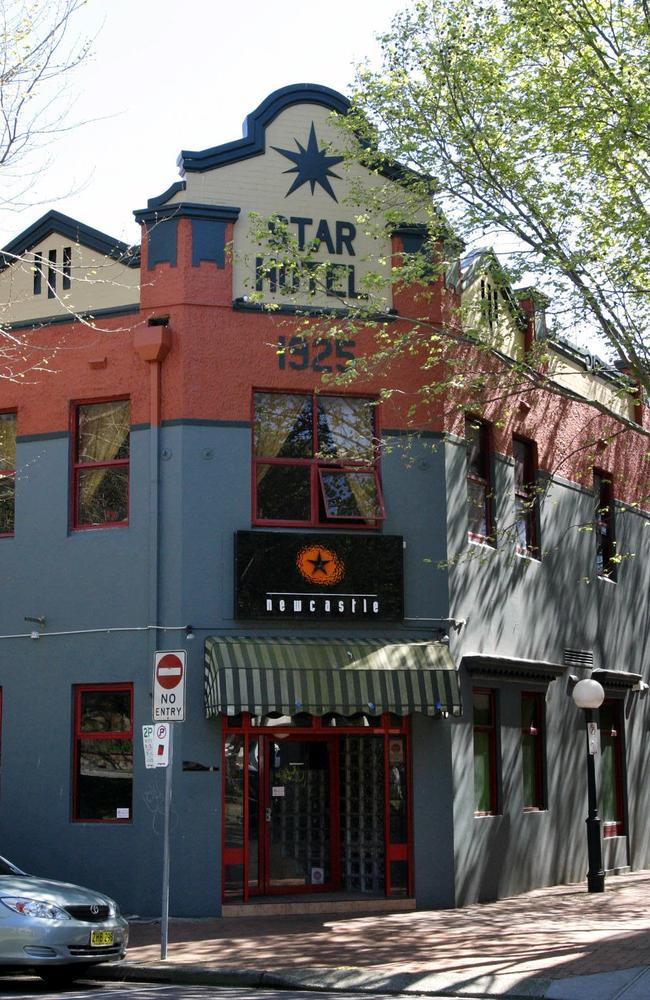
He had stayed in a range of places across the Eastlakes area as well as the Star Hotel.
A man testified that he had seen Milat at the Belmont hotel the night before Robyn disappeared. The inquest heard Milat had boasted to an associate that there were body pits and grave sites all over the Hunter.
Milat gave evidence, saying he had picked up about 15 hitchhikers but not in the Hunter.
“I had nothing to do with whatever happened to their children. I can look at them people, right in the eye, and say, ‘I had absolutely nothing to do with your children going missing’,” he told the court.
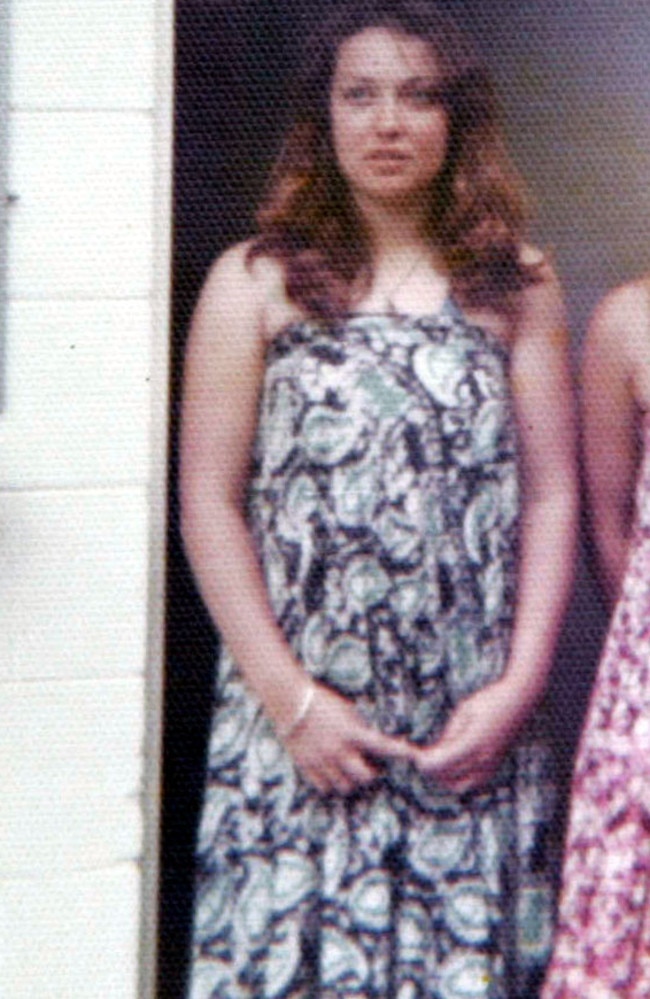
WESTERN SYDNEY CASES
Gillian Jamieson and Deborah Balken
June 12, 1980
They were both 20 years old, and had developed their friendship at Cumberland High School before going on to become trainee nurses.
They were confident, friendly and sometimes they hitchhiked.
At around 7.30pm on June 12, 1980, the girls are seen in a back bar of the Tollgate Hotel in Church Street, Parramatta talking with a man wearing a large-brimmed black cowboy hat.
A woman who worked at the snack bar saw them at the hotel, a bikie hangout where drugs were dealt.
Ms Balkan later phoned a flatmate and said the two had got a lift to a party in Wollongong on the NSW South Coast.
That flatmate, a snack bar worker, would later testify at the girls’ inquest that months after the girls’ disappearance the man in the black hat had threatened to slit her throat if she said anything.
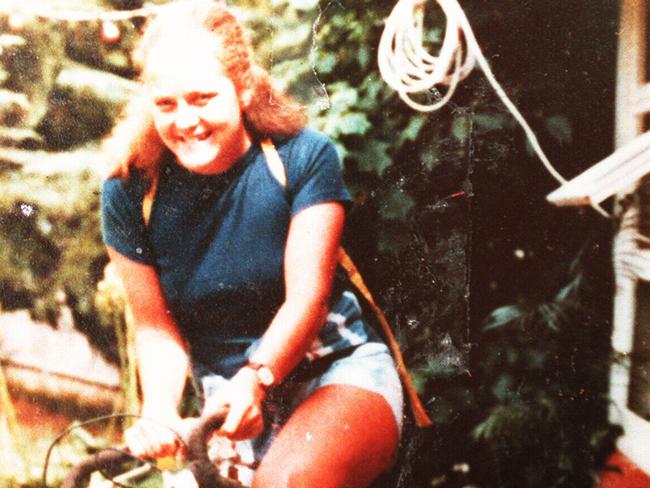
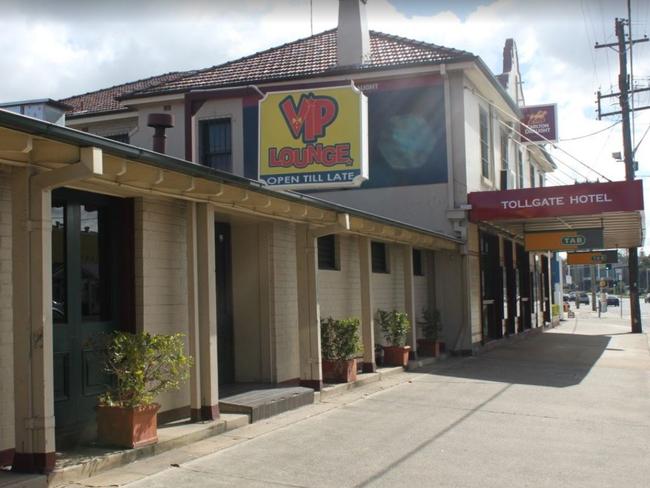
The woman said he had told her, “It was a terrible thing that happened. You know they’re dead. The police won’t find them.”
Following the girls’ disappearance, Ivan Milat, who in 1980 was working at the Granville depot of the then Department of Main Roads, is understood to have been interviewed.
Police asked him about his movements and vehicles he owned, including a lime green Valiant Charger sedan.
More than 40 alleged sightings of Gillian and Deborah, from Queensland to Victoria, were reported to the police, but they were never found.
Milat was named as a person of interest at the young women’s joint inquest.
MILAT’S MID 1980s TURMOIL
In the mid-1980s Milat started work as a surface sprayer on NSW roads and his job took him all over the state.
His fellow workers knew him as a loner, who regularly disappeared from their digs overnight on away jobs in the Blue Mountains, Hunter Valley and the NSW South Coast.
During this time, Milat’s marriage to Karen Duck is deteriorating.
He has a growing obsession with guns that frightens her, and an expanding armoury which includes some very large knives, a revolver and a Ruger 10/22 rifle.
Milat takes Karen to the Jenolan Caves where they look at a dirt track and a pine plantation, and four times to the remote Belanglo Forest.
In the late 1980s a body will be found in the Jenolan State Forest in a death scene that will later draw close comparisons with those at Belanglo.
By 1987, Karen Duck had left Ivan Milat.
As Clive Small was to observe, this was the danger time for Ivan Milat: when he was alone the emotional circumstances which triggered his killing were in play.

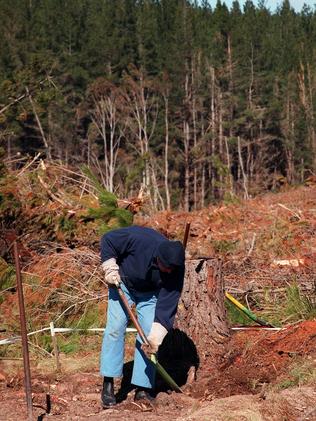
Peter Letcher
November 13, 1987
Unemployed sawmiller Peter Letcher travels to Sydney to propose to his 15-year-old girlfriend, who tells him she’s too young to get married.
Mr Letcher is flat broke. After losing his job at the timber mill in 1985, he lost touch with his family and became somewhat of a lost soul for two years.
But on the day he vanished, Mr Letcher leaves the southwestern Sydney suburb of Busby to hitchhike to his parents’ home in Bathurst.
He never makes it there.
Just over two months later, on January 21, 1988, two bushwalkers came across Mr Letcher’s remains.
They are in 15m off a forest trail in a clear-felled section of forest, about 20km from the tourist attraction, the Jenolan Caves.
The body is lying face down in a shallow ditch, covered in branches and leaf litter.
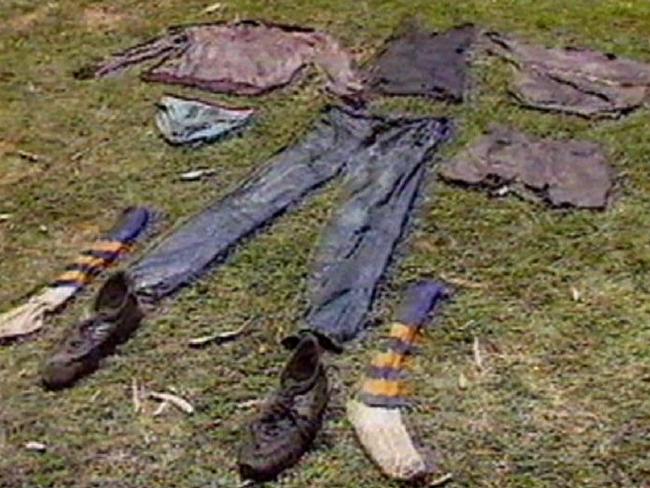
He is wearing only jeans, football socks and running shoes. Nearby lie his shirt and jumper, riddled with bullet holes, and an empty whisky bottle.
The body is badly decomposed; only after forensic tests will police discover the bullet wounds to his head.
Investigating detectives will later conclude Mr Letcher was bound and blindfolded, stabbed multiple times in the back and shot five times in the head with a .22 calibre weapon.

BELANGLO STATE FOREST
From late 1989 or early 1990, Milat is working for the Department of Main Roads again, renamed as the Roads and Traffic Authority (RTA).
He doesn’t have many away jobs and works both ends of the Mittagong bypass. The Belanglo Forest is 20km away.
On December 30, 1989, Australians Deborah Everist and James Gibson, both 19, left Melbourne to attend a festival at Albury.
Ms Everist, a teenage student, loved the comforts of home and had never travelled away before.
But, encouraged by her mother to “go and have a break ... it will do you good”, with her friend James Gibson, Ms Everist took off.
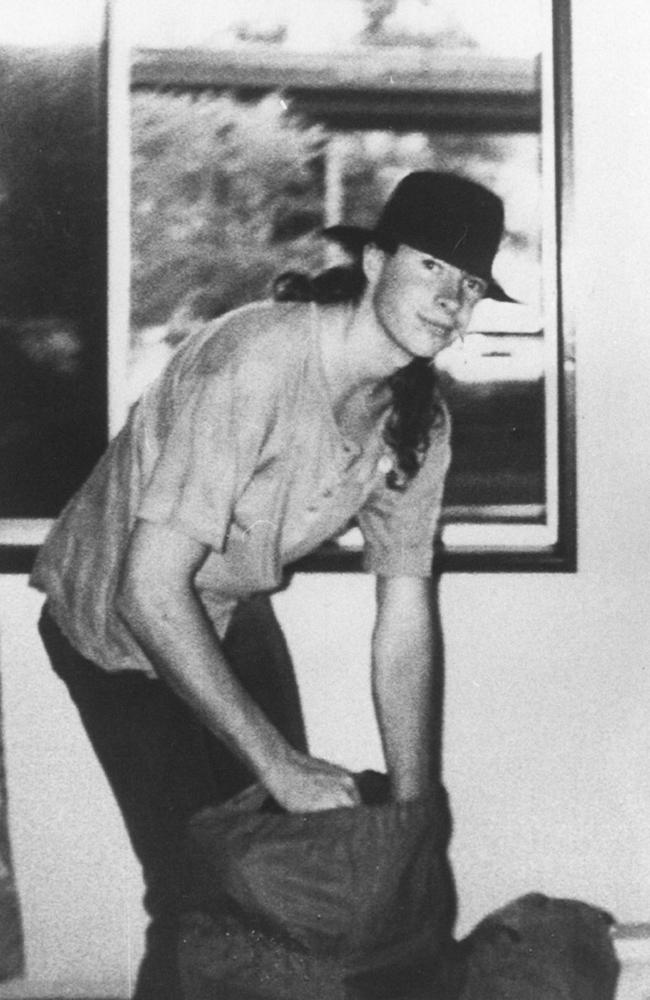
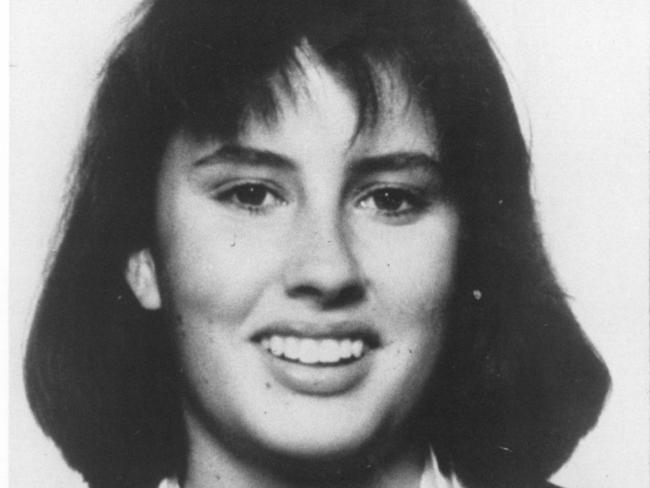
They couple first went to Sydney, where they stayed at a backpacker hostel in the inner city suburbs.
After checking out, they were headed for Confest, planning to hitchhike to Albury.
A day after they left, a bushwalker found Mr Gibson’s camera by the road at Galston Gorge, in northern Sydney.
The person took thee damaged camera home, and only reported it when Mr Gibson’s empty backpack was found in the same area a month later and linked to the couple’s missing persons report.
Simone Schmidl
January 20, 1991
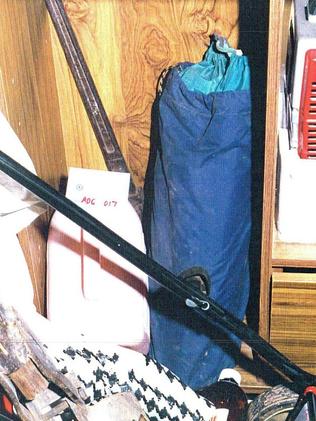
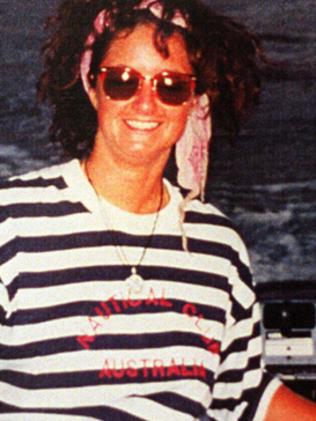
On January 20, 1991, Simone Schmidl set off to hitchhike from Sydney.
She told others she was off to Melbourne to meet her mother, Erwine, who was flying in from Germany to join her for a camping holiday.
Warned against hitchhiking by Australians she befriended, ‘Simi’ produced a tourist book which declared it was safe to do so because Australians were friendly.
She was last seen at a train station preparing to leave for western Sydney where she could get a ride.
After Erwine Schmidl arrived in Melbourne two days later and could not locate her daughter, she called police.
Mrs Schmidl stayed in Australia for six weeks, to return to her home town of Rechsberg devastated.
Dianne Pennacchio
September 6, 1991
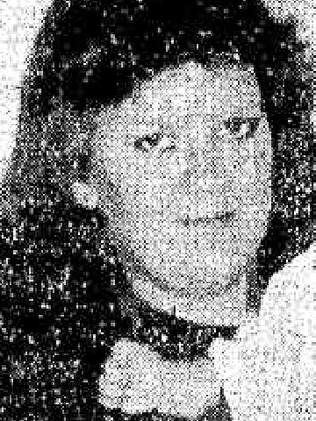
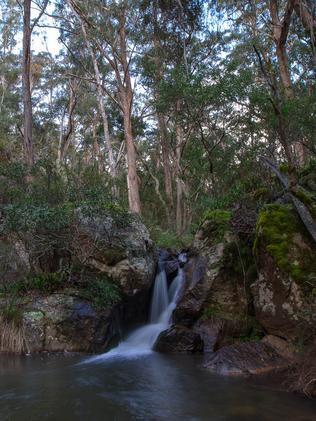
Mother of two Dianne Pennacchio, 29, went to the Lake George Hotel in Gibraltar Street, Bungendore on the evening of September 6, 1991.
She told a friend she intended to hitchhike back home to Queanbeyan and was last seen leaving the hotel alone at around 11pm, heading for the Kings Highway.
For the next two months, Ms Pennacchio’s family were at a loss.
Then on November 13, 1991, two forestry commission workers were in the Tallaganda State Forest, south west of Canberra and 40km from Bungendore.
They found a body lying face down covered with pine branches about 30m from McCurley’s Road.
Her underpants and jeans were around her ankles and she had been stabbed once in the eighth thoracic vertebrae.
Police believed she had been killed elsewhere and her body dumped.
Gabor Neugebauer and Anja Habschied
On December 26, 1991
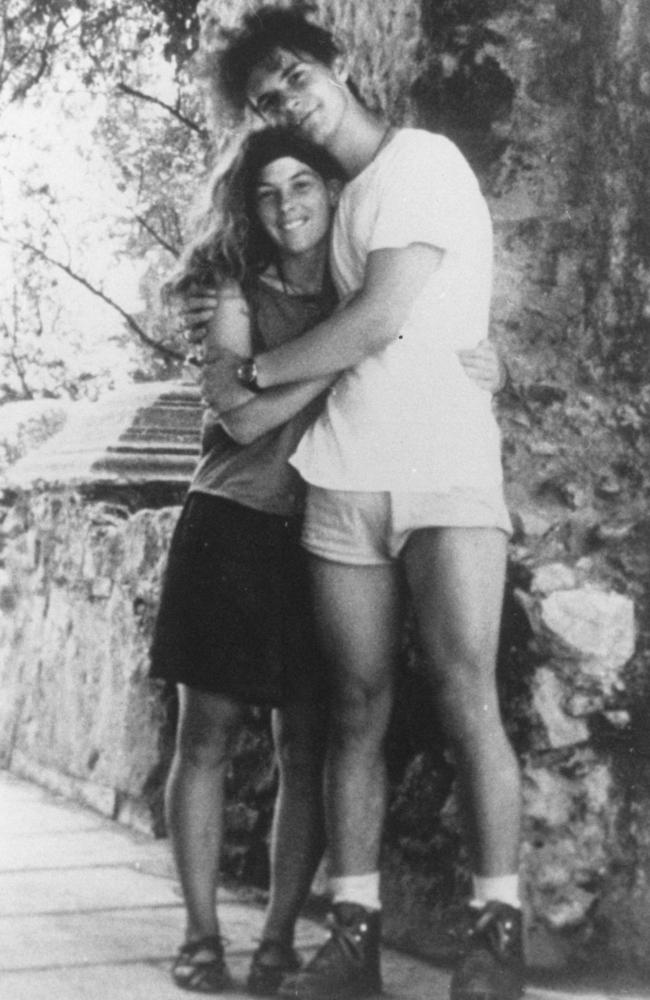
On December 26, 1991 German backpackers Gabor Neugebauer and Anja Habschied left the Backpackers Inn at Kings Cross in Sydney to hitchhike to Adelaide, and then on to Darwin.
The couple had already been to Bali on their way to Sydney, and planned to return home to Germany via South-East Asia.
Gabor was a tall and fit 21-year-old who had served time in the army and was very much in love with his 20-year-old girlfriend.
Ms Habschied’s last letter home to her family spoke of the long distances between the spots the couple wanted to see, and that they would need to travel the 4100km to Darwin fairly swiftly.
The pair missed their flight to Indonesia. It would be two long years before their remains were found, with a discarded airline ticket near their bodies.
Joanne Walters and Caroline Clarke
April 18, 1992
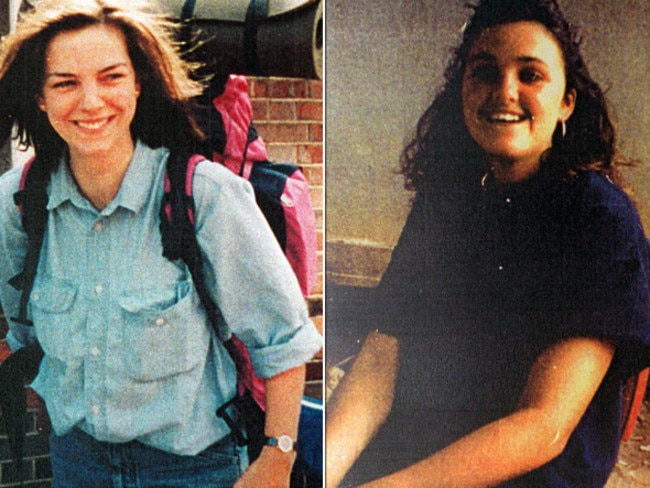
Britons Joanne Walters, 22, and Caroline Clarke, 21, were the last of the seven Belanglo backpacker victims to go missing, but their bodies were the first to be found.
Ms Clarke from Northumberland, England and Ms Walters, of Wales, met up at a backpackers hostel in Sydney.
Soon afterwards, on April 18, 1992, they left Kings Cross to hitchhike together around Australia.
They were headed for Victoria to pick fruit and made it to the Bulli Pass, near Wollongong, where they reportedly asked for directions to the Hume Highway.
It is a 96km journey from where the two were last seen to the Belanglo Forest, which lies off the Hume Highway en route to Melbourne.
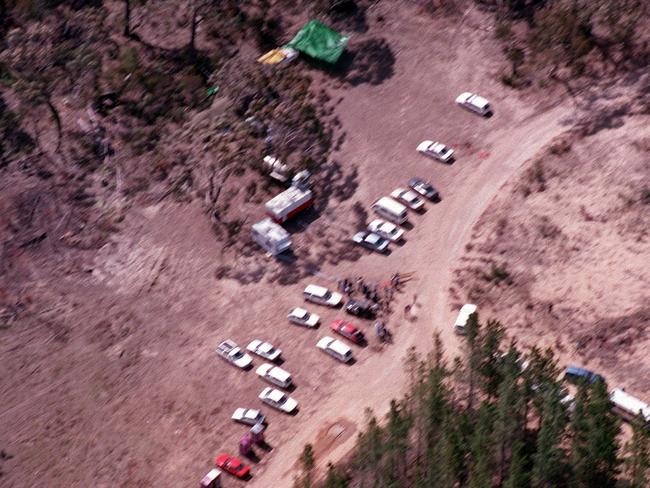
BODIES DISCOVERED
On September 19 1992, two runners discovered a decaying corpse while orienteering at the Long Acre Fire Trail in the Belanglo State Forest.
Joanne Walters had been sexually assaulted, gagged and stabbed 20 times.
Caroline Clarke’s body was found 30m away. A jumper had been tied around her head before she was shot 10 times through the garment.
Ms Clarke had been sexually assaulted and stabbed through the back of her right lung.
Within 14 months, six more bodies would be discovered among the 3500ha Belanglo pine plantations.
In October 1993 the bodies of Deborah Everist and James Gibson were found; both had been stabbed multiple times.
The following month, on November 1, Simone Schmidl’s remains were found.
She had died from multiple stab wounds, including a knife through her spinal cord.
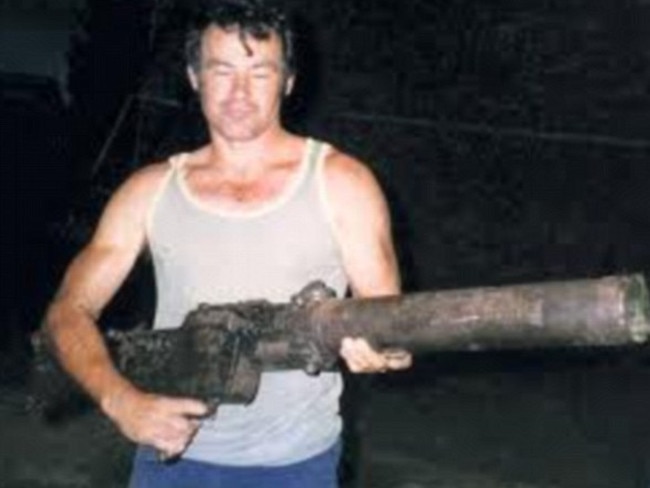
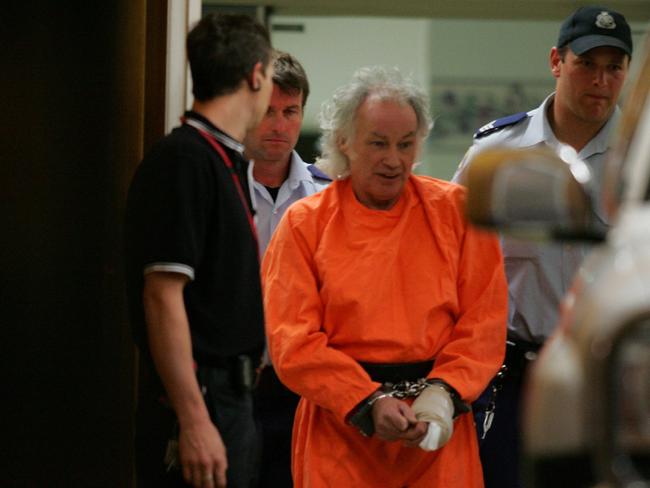
Two days later, the last to be found are perhaps the most brutally murdered of all the Belanglo victims.
Gabor Neugebauer was gagged and shot six times. Anja Habschied, was decapitated, put on a leash made from a sash cord perhaps from Milat’s mother’s house and her spinal cord severed.
The couple’s bodies are in shallow graves 50m apart. Ms Habschied’s head is never found.
Task Force Air intensifies its investigations and on May 22, 1994, police in seven different locations burst through the doors of properties occupied by Ivan Milat and his family.
Detectives convince Ivan to walk out from his Eaglevale home in western Sydney and they place him in a police vehicle.
It would be some of his last moments in the outside world.
Police found hundreds of items in Milat's home including a blue Salewa brand sleeping bag cover wrapped around the Vaude Hogan brand tent with pegs and cords.
Both items belonged to Simone Schmidl.
In Milat’s relatives’ homes, police find items belonging to the murdered backpackers given as gifts by the serial killer to his unknowing family members.
In 1996 a jury convicts Milat of all seven backpackers murders and he is given seven life sentences.
Investigations into the unsolved murders continue and each time he is challenged, Milat denies any knowledge of the killings.
He also continues to claim his innocence over the backpacker murders, and petition courts and authorities to free him.



